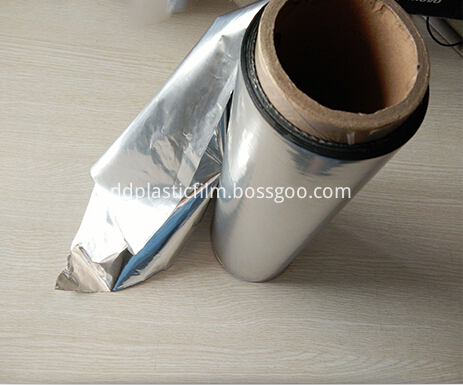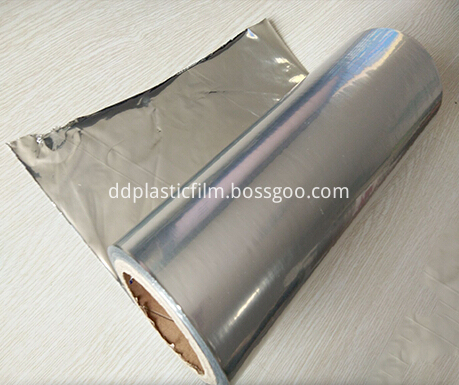As a packaging material, plastic has four characteristics: light, convenient, excellent, and beautiful.
The package itself is light in weight, flexible in size and easy to use. Plastics also have good mechanical strength, are not easily broken, can withstand extrusion, meet the requirements of non-broken packaging, made of foam, have good cushioning properties, play a role in protecting fragile goods, and can withstand general acid and alkali chemistry. Products. There are many transparent plastics that can be made to require transparency, can see the packaging of the items being packaged, in order to increase consumer confidence in the purchase, use the shrinkage of the orientation of the plastic, develop a Shrink Film, and play a very good role in tight packaging. In addition, according to the functional requirements of packaging, it can also have barrier, permeability, heat resistance, cold resistance, chemical stability, hygienic, transparency and other properties to meet the various needs of the packaged products.
Reduction and reuse of a plastic package
Reduction is to reduce resource consumption and reduce the amount of material to be given up. It is the preferred way to green plastic packaging. Under the functional conditions of protection, convenience, sales, etc., start from the source of packaging design, design the least amount of appropriate packaging, and reduce the amount of packaging material from the source. To this end, an organized investigation should be conducted on the specifications of plastic packaging and materials that are widely used in large quantities. On this basis, the following measures should be taken: to improve the packaging structure design and reduce the amount of waste; and to use high-strength lightweight materials. , save material resource consumption; use co-extrusion and foam technology to reduce the amount of materials; oppose over-packaging, promote proper packaging; limit the use of disposable packaging
Recycling and reuse of plastic packaging is a recycling and recycling technology. It is an important means for effectively saving original resources and energy and reducing the amount of packaging waste. It should be given due attention.
Second plastic packaging recycling
Recycling and reuse of plastic packaging is a recycling and recycling technology. It is an important means of effectively saving raw material resources and energy, and reducing the amount of packaging material to be given. It should be given full attention.
Industrialized countries such as Germany and France have enacted a decree for the recycling of packaging. The decree stipulates that deposits shall be levied on bottled containers such as beverage packaging containers and latex paints. At the same time, the decree also stipulates that refilling cannot be performed and cannot Recycling and reuse of bottled containers is restricted by a high taxation system, which promotes the recycling of packaging containers for reuse.
In order to use the bottled container repeatedly, it is necessary to pay attention to the development of the sterilizing detergent technology and the filling and filling technology. Sweden and other countries have used advanced sterilizing lotion technology to recycle polycarbonate resin bottles and bottles 75 times. In recent years, Germany has focused on the development and reuse of sterilizing detergent technology. The U.S. vigorously develops concentrated laundry and conditioning products and heavy can technology, and its fabrics can reach a 40% weight rate.
Three plastic packaging recycling
Recycling and reuse of plastic packaging, collectively referred to as plastic packaging recycling, is a technology for reusing resources from plastic packaging. Recycling is one of the most active waste treatment methods for controlling environmental pollution, saving resources and energy, and promoting the recycling of packaging materials. It is more reasonable and effective than traditional filling methods, and has therefore become the most used in the world. The way. According to data reports, the number of recycled products that plastics has given up can save 85%-95% of resin consumption and save 6%-17% of processing energy. In addition to recycling and recycling technologies, plastic packaging waste recycling technologies include recycled material recycling technologies, pyrolysis monomer or chemical recovery technologies, oil recovery fuel technologies, incineration and recovery heat energy technologies, and composting technologies. At present, we should focus on recycling and recycling of materials and recycling technology; and chemical recovery and regeneration of pyrolysis technology and oil technology is the future direction that we should pay attention to.
Material recycling and regeneration can be divided into direct regeneration and modified regeneration. Direct regeneration is the use of waste plastics, which are pre-processed and crushed, directly plasticized, then processed or pelletized, sometimes requiring the addition of a certain amount of new resin, and the addition of suitable additives such as antioxidants, lubricants, stabilizers, etc. Plasticizers, colorants, etc. to improve appearance and processability, and prevent aging. Direct regeneration can be divided into 3 kinds of situations: without splitting, cleaning, etc., it is only necessary to directly crush and then plasticize, such as scraps and residues in the production process; it needs to be subjected to separation, cleaning, drying, damage and other pre-treatments, such as Contaminated plastic discards, preferably after the waste is classified according to the raw material plasticization; the last one is the need for special pretreatment, such as foam plastic, large volume should not be input processing agencies, before the defoaming reduction deal with.
The main processes for direct regeneration are plasticization, granulation, separation and drying. The plasticization is carried out on a double-track plasticator, an internal mixer, with the aim of preparing recycled pellets and shaping them directly after plasticization. Granulation has cold cuts and eager cuts. Cold cuts are extruded melts that are cooled in a cold water bath. Separation can be manual or mechanical, such as electrostatic separation, cyclone separation, centrifugal separation, magnetic separation, etc. This is a difficult technology. For drying, a desiccator with a heated sandwich was used. The sandwich was heated by rotating steam while rotating while drying.
IV Development of Degradable Plastics
Degradable plastics refers to the addition of some auxiliaries to promote the degradation of plastics in plastics, or the synthesis of plastics with inherent degradation properties, or plastics made from renewable natural materials, which can meet the original application performance requirements during use and storage. After use, under certain circumstances, the chemical structure changes significantly in a relatively short period of time, resulting in certain types of plastics that suffer from property degradation.
Degradable plastics can be divided into polymer type and blend type according to manufacturing methods. According to the degree of degradation, they can be divided into completely biodegradable plastics and destructive degradable plastics. According to the degradation mechanism, they can be divided into photodegradable plastics, biodegradable plastics, and biodegradable plastics. And other degradable plastics.
V. Development of plastic packaging environmental protection new products
Water-soluble plastic packaging film as a novel green packaging material is widely used in packaging of various products in Europe, America, Japan and other countries. Its main advantages are thorough degradation, convenient and safe use, good mechanical properties, heat sealability, high heat seal strength and anti-counterfeit function, and can be used as the best weapon for high-quality product anti-counterfeiting, prolonging the life cycle of high-quality products. The main properties of water-soluble packaging film are: (1) Water content A volume of water-soluble film is generally packaged in PE plastic and its specific moisture content is constant. (2) Anti-static property Water-soluble packaging film is an anti-static film. Unlike other plastic films, it has good anti-static punishment. (3) Moisture and gas permeable water-soluble films have strong permeability to moisture and ammonia, but have good barrier properties to oxygen, nitrogen, hydrogen, and carbon dioxide. (4) Heat-sealable water-soluble packaging film has good heat-sealability. In addition, water-soluble packaging films have good mechanical properties, printing properties, oil resistance, chemical resistance and water solubility.
Wood-plastic composites use wood fiber-filled, reinforced thermoplastics modified materials that are extruded into sheets, profiles and other products, replacing wood and plastics. Plastic-wood composite materials have the advantages of light weight, good dimensional stability, good heat resistance, easy processing, recyclability, and good wood feel.
Synthetic paper is also called polymeric paper or plastic paper. It is based on synthetic resin as the main raw material, after a certain high temperature to soften the above resin, extrusion, extended into a thin film, and then processed into a paper-like packaging material
The raw materials of edible packaging materials are natural organic small molecules and macromolecules, so it can be naturally absorbed by the human body, and can also be naturally weathered and microbially degraded. It is usually produced by crushing, squeezing or immersing, extracting or smelting raw materials, and then filtering and concentrating, and then adding various small amount of compounding agents to facilitate film formation, increase strength, toughness, and processing under certain process conditions. .
Nano-packaging materials are the product of high-tech development. With the development of nanotechnology, nano-materials emerge in an endless stream, which provides a broader space for the development of green packaging. The recent nanomaterials are the following: (1) Nano-scale transparent iron oxide pigments, which will have a major impact on the upgrading of traditional pigments in China. (2) Nano-calcium carbonate preparation technology and process has been successfully developed nano-scale light calcium carbonate, is an important inorganic filler, can be applied to high-grade ink, high-grade plastic, paper, special paper and rubber products. (3) Hollow Nano Packaging Materials. The material is an inorganic compound nanomaterial, characterized by a hollow prismatic shape, and its strength, toughness, abrasion resistance, etc. are much higher than that of solid nanomaterials. (4) Polyester PET and PBT nanoplastics, with flame retardant properties, can be used to make foods, shawls, cosmetics packaging.
Conclusion
As people pay more and more attention to environmental issues, green packaging is increasingly becoming the focus of people in product packaging. In the packaging of today's products, plastic occupies an important position. At the same time, it has become an inevitable research object for people to achieve green packaging. It can also be said that if the problem of green plastic is solved, life will not be seen again. "White pollution", our natural environment will also be more beautiful.
Thickness: 28mic, 50mic, 90mic, Other thickness accept customized
Width : 200-2000mm , other accept customized
use: 1.packaging , 2.lamination 3. thermal insulation 4. buliding 5. climb mat 6.Reflective ect
Product advantage:
- Protect your product surface from pollution, damage & UV .corrode, and scratch duringthe process of produce, transport, store and installation
- Durable, recyclable, health & safe; Hot-temperature endurable, anti-aging.
- 6 color over print to improve your brand image by having your logo & contact details on Hot Sale Fire Retardant Vmpe Film ;
- Stable adhering capacity and Special easy-peel & remove, no adhesive residue after Hot Sale Fire Retardant Vmpe Film removal;
- We have the 9 whole production line (blow molding, printing, coating, cutting)
- a stated-owned factory producing Hot Sale Fire Retardant Vmpe Film for nearly 20 years


Vmpe
Thermal Laminating Film,Metallized Polyethylene Film,Vmpe Pe Film,Metallized Pe Film
Shijiazhuang dadao Packaging materials Co , http://www.ddplasticfilm.com